Need a quick review of what to pick up at your local comic shop? Check out this review on the go!
Comic books, by their nature, are a serial medium. Every month, publishers release out new chapters of their titles that in 22 pages, more or less, have to advance the stories therein. Readers return for each installment to discover what fate holds for their favorite heroes.
However, with many of these characters, having such a long and rich history, chunks of the lives of these heroes may be unknown to readers. For instance, you might have consumed X-Men comics for a few years, but that doesn’t necessarily mean that you know that The Scarlet Witch was a member of The Brotherhood of Evil Mutants in her first appearance in the early 1960s. How can you get a good grasp of the decades worth of a hero’s history without reading hundreds of comics?
That’s the beauty of Marvel Comics’ various “Grand Design” miniseries. Writer and artist Ed Piskor kicked off the concept with his X-Men: Grand Design books, with Tom Scioli contributing his own interpretation focusing on The Fantastic Four. (Check out our review of X-Men: Grand Design: Second Genesis #1!) These miniseries condense year of story arcs into digestible bits spanning a mere handful of issues. However, what makes these retellings shine is that they’re not just a Cliff’s Notes version of the past goings-on of your favorite characters. Instead, what we get are love letters to The X-Men and Fantastic Four, presenting them in a loving way that highlights the, well, grandness of their exploits. Moreover, while there are clearly homages to past issues and storytelling techniques found therein (more on that later), it’s never a matter of aping those works. Rather, readers are treated to new experiences of familiar stories in ways that these individual creators can deliver with their specific type of flair.
Which brings us to Hulk: Grand Design, by Jim Rugg and released by Marvel in 2022. In Hulk, Rugg picks up the Grand Design notion and takes the football in different direction to get to the goal. Told in two issues and later collected in paperback, Rugg retells the comic origin of The Hulk that has become a part of modern-day American folklore: Dr. Bruce Banner saves a teenager at a gamma bomb testing site, only to be bombarded by the radiation, which eventually turns him into the green goliath we know today. Where the creative team zags left is how he tells the stories of Bruce and The Hulk‘s history. We get the basic beats of his storied past and present (and possible futures), but Rugg seems to be writing dialogue and rendering linework that is reminiscent of how those tales were told by the character’s creators over the years. We see John Byrne and Peter David and Sal Buscema and Herb Trimpe, but he’s never slavish or parodying. He’s celebrating their works, while putting his own indelible mark and applying his own style.
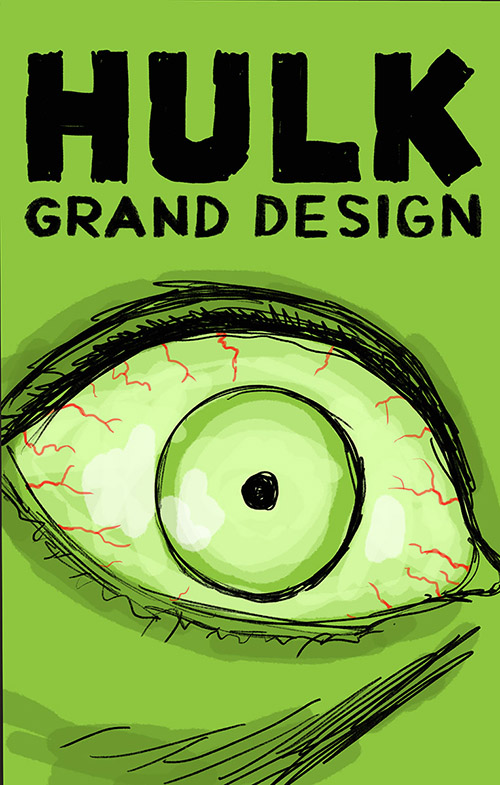
This is especially seen in how he often combines events and emotions onto the page. We don’t need to see a representation or recreation of every Hulk encounter or life event to know that one of the running themes of his story is persecution and hatred from and of others. Just look at the page below.
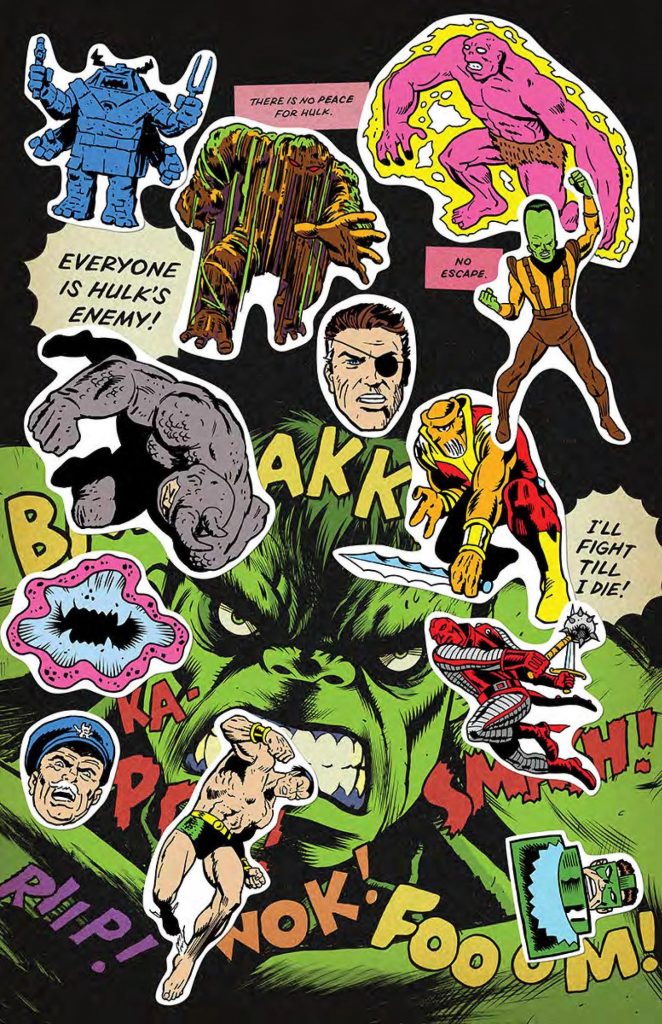
The reader knows the Hulk‘s plight and condition, right in that one page in that one moment in time. His world for that time period presented is totally known in one page. It’s such an economy in storytelling that doesn’t lose any nuance in the process. But again, looking at the art on the page, there’s no mistake that’s Rugg‘s work, with an intensity befitting his emerald subject matter.
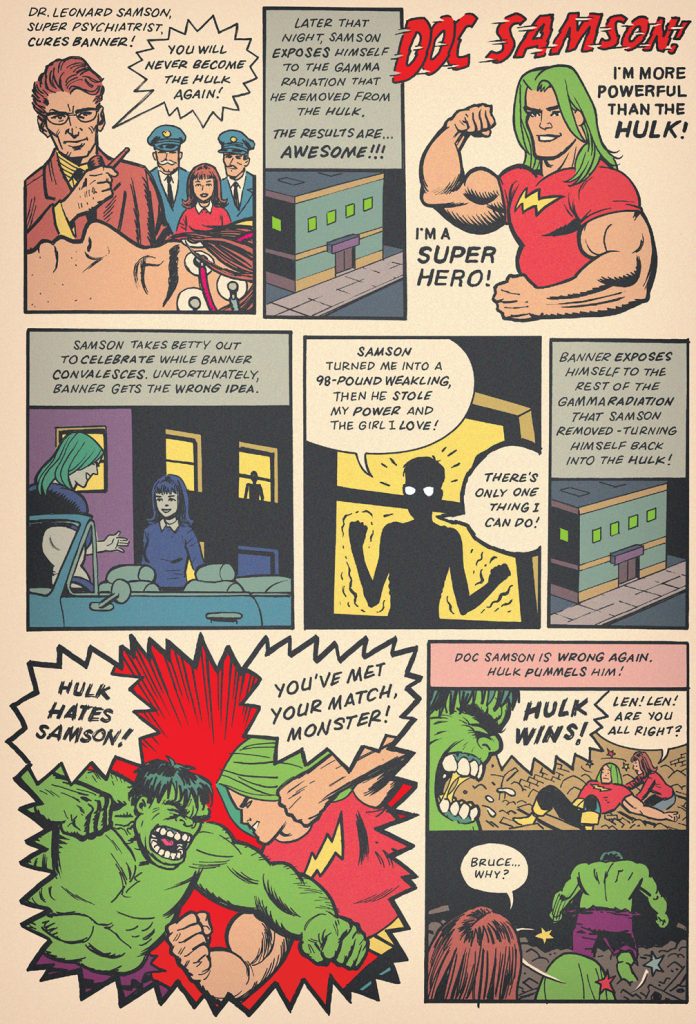
That sensibility especially serves the second issue, Hulk: Grand Design – Madness!, as the more recent exploits of The Hulk are interpreted by Rugg, and in a very ingenious way. They seem to recognize a certain divide in comics from the past to the present. The 1980s through today seem to have a greater focus on bombastic “event” comics, from Secret Wars to The Infinity Gauntlet to World War Hulk. Rugg depict this later in Madness! by giving less room to the stories mentioned to breathe. His drawings become more roughly kinetic. Figures are larger and fill the page. It’s commentary and meta-commentary and very smart narrative.
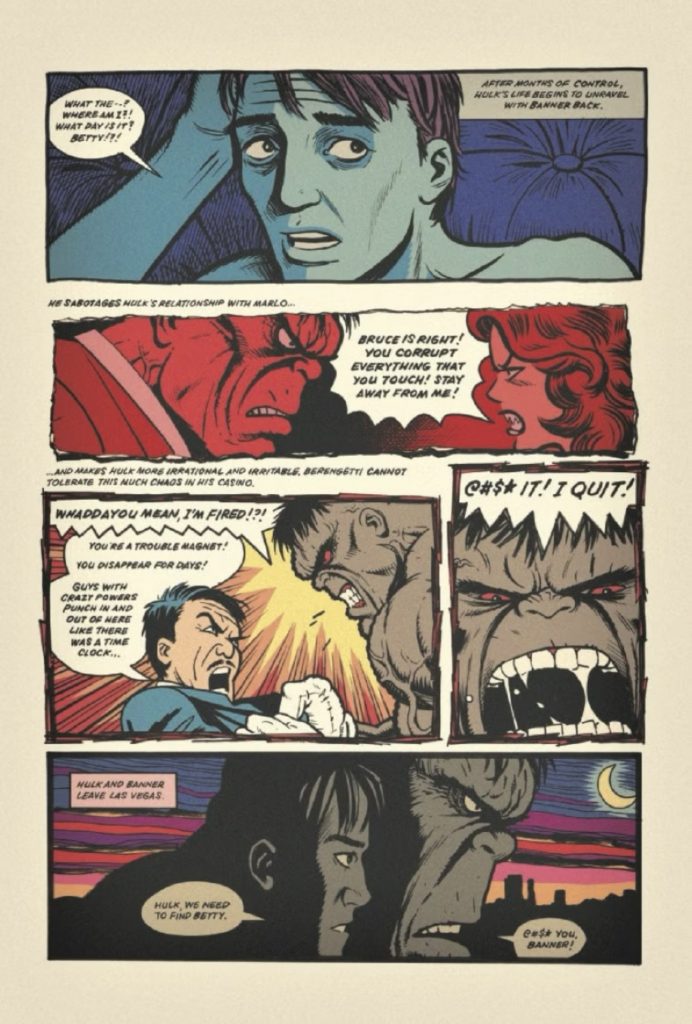
Hulk: Grand Design is a brilliant, engrossing tale that’s a shining exemplar of economic storytelling, reflection on the comics industry itself, and a love letter to The Hulk. The fact that Rugg does this in just two oversized issues is both mind-boggling and worth your time.
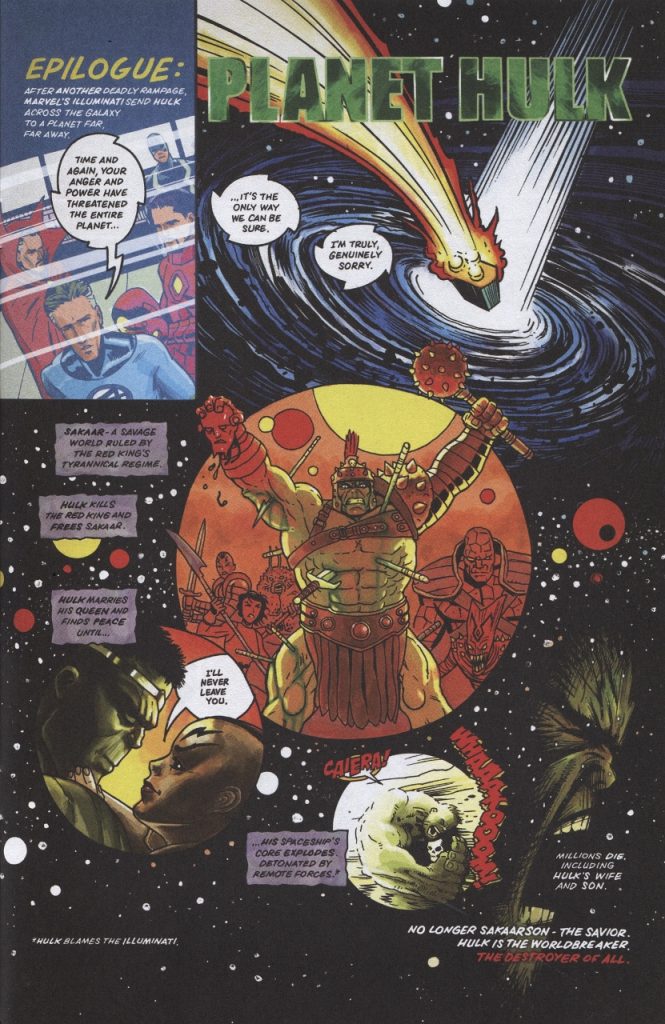
Hulk: Grand Design is now available in paperback and as a treasury addition.
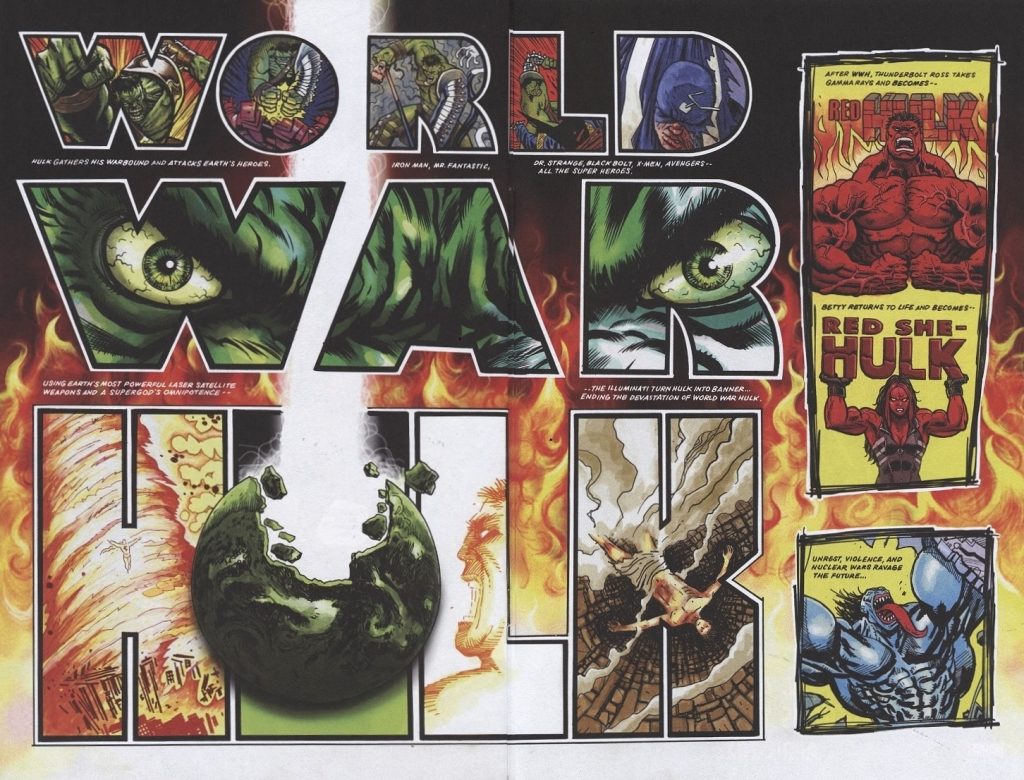
From the official description:
The acclaimed GRAND DESIGN franchise continues with the Monster…and the Madness! Writer/artist Jim Rugg follows in the tradition of Ed Piskor and Tom Scioli by unfurling the full saga of the Incredible Hulk, from the very beginning to the present day! From Bruce Banner’s volatile upbringing to the fateful gamma bomb detonation that changed everything – to years of anger, smashing and just wanting to be left alone! He’s been a hero…a hate figure…even a world-breaker. Now witness the biggest moments in the Hulk’s history – through the eyes of a single visionary storyteller! You’ll never look at Bruce Banner the same way again! Collecting HULK: GRAND DESIGN – MONSTER and HULK: GRAND DESIGN – MADNESS.
